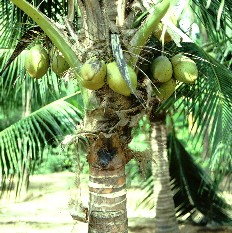It is a move in the right direction for Energy Minister Piyasvasti
Amranand to recognise the consumer's right to choose, by agreeing to
retain regular gasoline with 91 and 95 octane in the supply chain. By
opting not to replace them with gasohol, a blend of 90% gasoline and 10%
crop-based ethanol and also known as E10, he has acknowledged the fact
that there are still hundreds of thousands of vehicles on the streets
which are incompatible with the alternative fuel.
These vehicles, especially those made before 1995, are vulnerable to
ethanol which can eat away at metal, plastic and rubber parts in engines
over time, thus causing damage and preventing vehicles from running
properly.
There is a scientific consensus that the higher the concentration of
ethanol in gasohol, the higher the corrosive effect.
For that very reason many motorists choose to stick to conventional
gasoline to avoid damage to one of their lifetime's major investments,
despite the significant price incentive with the pump price of gasohol
being 3.30 baht a litre lower than regular gasohol.
Also, because gasohol contains slightly less energy than petrol,
motorists continue to fill up their tanks with regular petrol to achieve
the performance and mileage the cars were designed for.
Many motorists do not embrace gasohol because some auto firms decline to
officially guarantee that their vehicles are compatible with the fuel;
some even void the warranty for damage it causes.
Today's performance sports cars and sophisticated vehicles like Ferrari
and Lexus are not made to run on fuel with less energy concentration
like gasohol.
Where would they get the petrol they require from if the proposed
phase-out of regular gasoline were implemented? There must be practical
solutions available to them.
However, the minister's strong push to promote the use of gasohol at all
costs has raised questions as to whether his action is serving the best
interests of the public at large, or is meant to keep some crop growers
and ethanol distillers rich and happy? Is it that necessary to further
widen the price gap between conventional gasoline and gasohol, already a
big difference, to lure motorists who cannot or are not ready to use the
alternative fuel?
The lower price of gasohol has been achieved by means of a heavy state
subsidy at the expense of regular gasoline users.
The ministry has progressively been reducing gasohol's contribution to
the Oil Fund, the state-managed mechanism to stabilise local petroleum
prices, to merely 10 satang per litre now, in order to distort the
gasohol price. That is a world away from the fee _ one of the key
components of petroleum product pricing in this country _ which the
ministry charges on regular gasoline, now in the magnitude of 3.30-3.40
baht per litre. A price incentive of 50 satang is good enough for
regular gasoline users to shift to gasohol with the knowledge that the
alternative fuel is all right for their vehicles. Who would really want
to pay more? That is common sense.
And why are users of regular gasoline and other types of fuel, apart
from gasohol, being made to shoulder the burden of paying up to clear
the deficit of the Oil Fund, originally amounting to 92 billion baht due
to policy mismanagement of the Thaksin Shinawatra administration?
Senior officials at the Energy Ministry seem to be overly obsessed with
the target to increase consumption of gasohol to 8 million litres per
day by the end of this year, from 4.5 million litres per day now, and
eventually to replace regular fuels with E10 and possibly higher
concentrations of ethanol.
It is a worthy endeavour that the ministry promotes gasohol as a
substitute for some of the imported petroleum products, to support
energy crop growers and improve air quality. But to stubbornly push
motorists without providing them with full information, including the
drawbacks arising from the use of gasohol, works against the public
interest.
It should be enough that the ministry uses taxpayers' money, which
amounts to 150 million baht so far (drawn from the Energy Conservation
Fund) on gasohol propaganda, which perhaps benefits local ethanol
producers and oil distributors more than anyone else. Ethanol producers
need to find their own ways to deal with their growing production
capacity, which is surging to 2.1 million litres/day over the past two
years from 955,000 litres/day; rather than seeking to eliminate regular
gasoline from the market. Now, ethanol demand for gasohol use is 450,000
litres a day.
Boonsong Kositchotethana is Deputy Assignment Editor (Business), Bangkok
Post.
--
Check for earlier Pacific Biofuel posts: http://pacbiofuel.blogspot.com/

1 comment:
Obviously, the writer of this article has not done his research properly.
Post a Comment